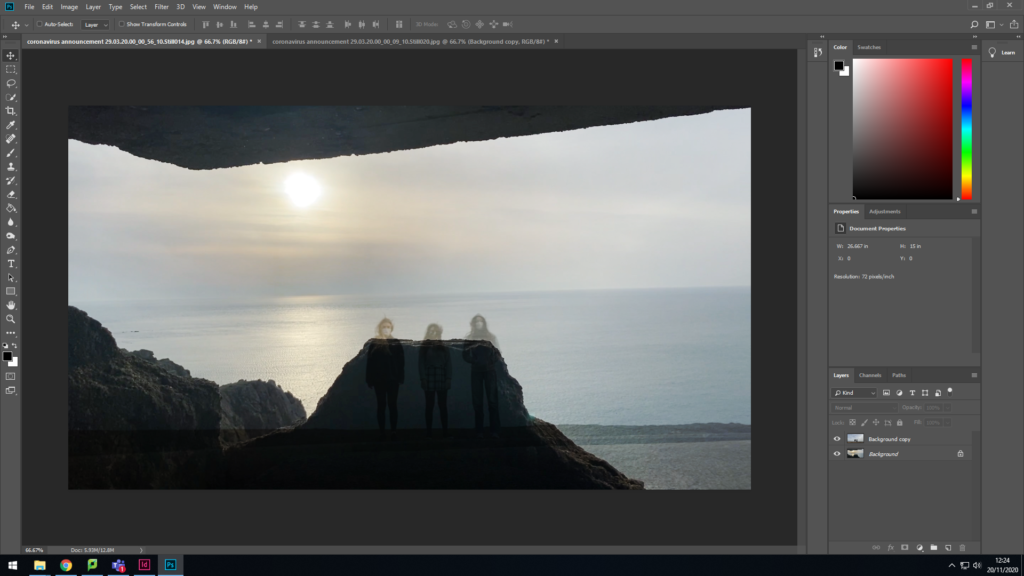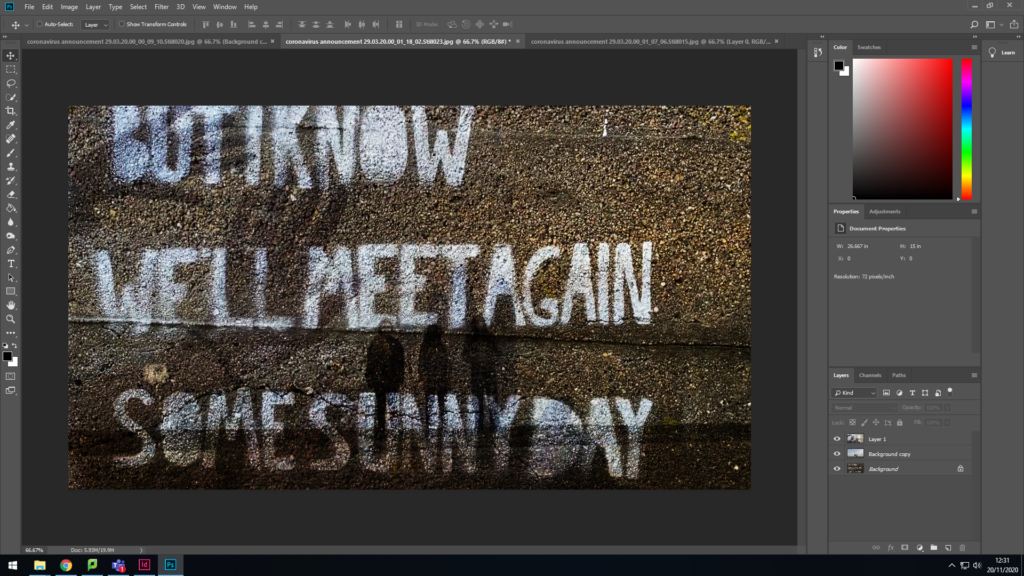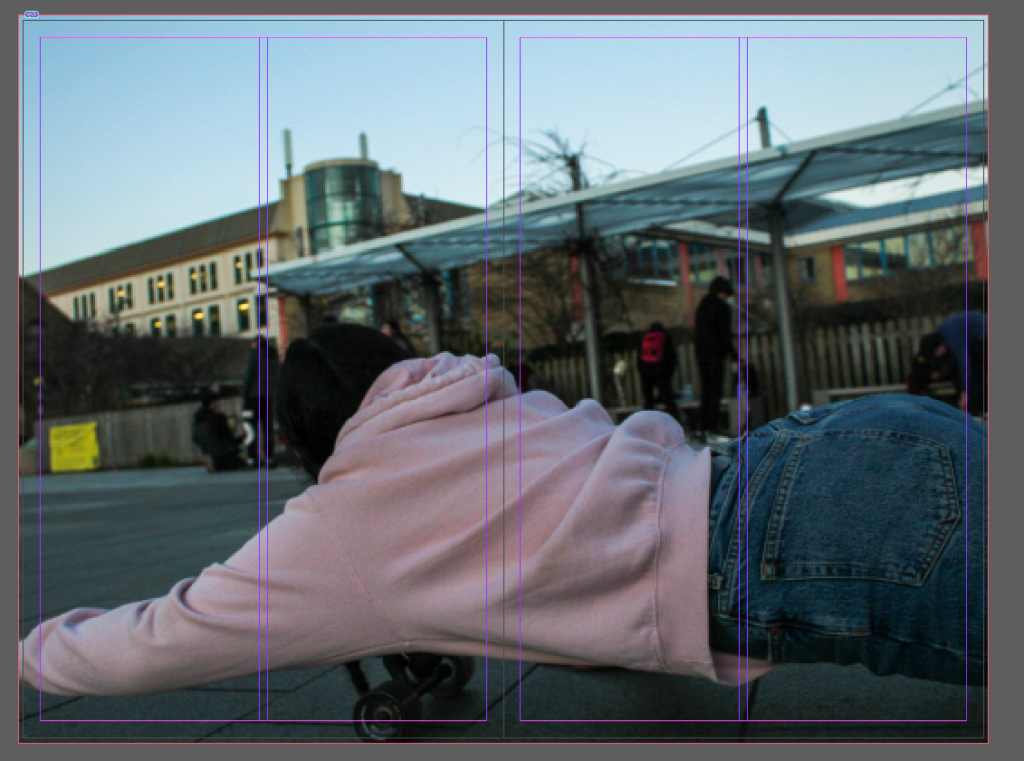





SEQUENCE
A sequence photo is the deconstruction of a moving subject within the same image. It’s a particularly interesting technique to portray a sports figure: ski and snowboard jumps, skating, etc. The results are always impressive, especially for rapid, acrobatic winter sports.
Jean Louis de Heeckeren

For most of his life, Chilean photographer Juan Louis de Heeckeren has been around fast-action sports – either shooting them or taking part. After gaining a degree in photography from Universidad del Pacifico in Santiago, Juan Louis began working as a freelance photographer for big-name brands in the sporting industry like Patagonia, The North Face and Red Bull.
He has also worked as photography editor for the Chilean magazines Lift and Freestyle, and his photography has graced the pages of sports titles across the globe. These days you’ll find Juan moving between the Andes mountain range and the Chilean coast, looking for the perfect landscape in which to photograph his subjects.
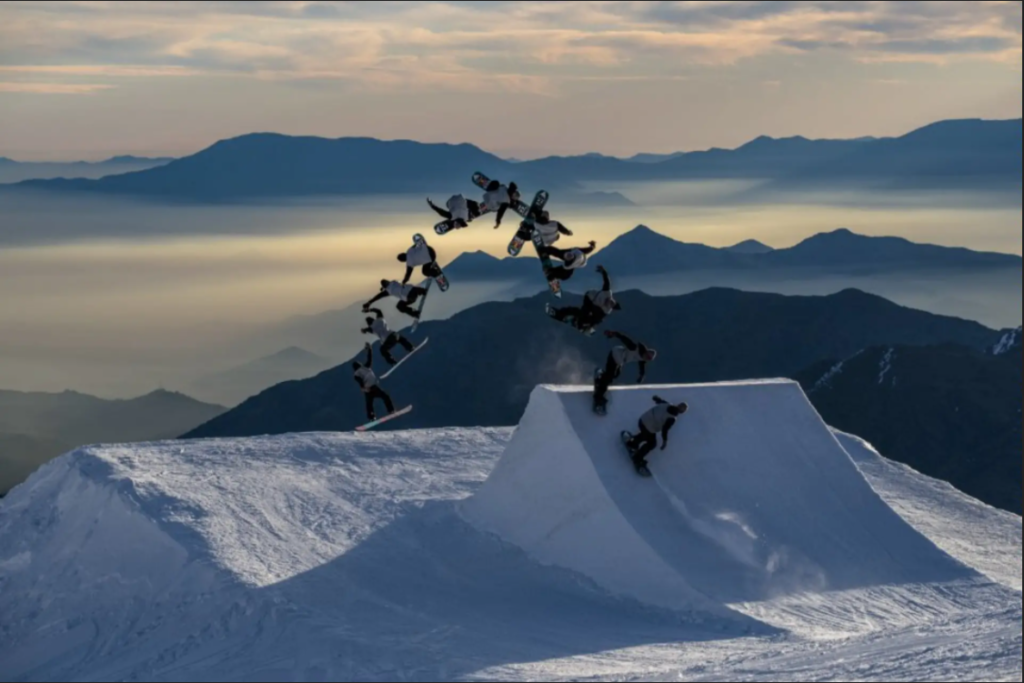
Photographer Juan Luis de Heeckeren in 2016 caught up with Marko Grilc in the Chilean resort of El Colorado. They teamed up to create some memorable images of snowboarding.
The shot is a sequence of Marko pulling off a Backside 360 Mute with the majestic Andes as backdrop. The awesome view and the twilight give a nice mood to the picture – well done Juan Luis.

I CHOSE THESE IMAGES BECAUSE I THOUGHT THEY WERE DIFFERENT AND HAD SOME REALLY COOL ACTIN SHOTS OF DEAN.


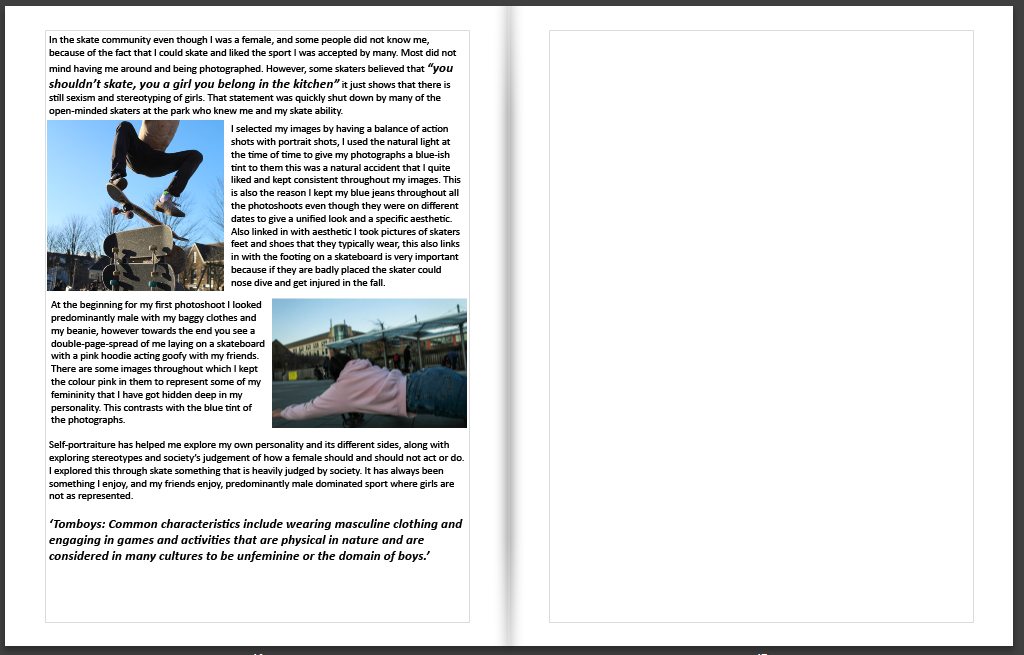
In what way can self-portraiture explore different female personalities, identities, and stereotypes?
“I am not de problem
I greet yu wid a smile
Yu put me in a pigeonhole
But i am versatile”.
No Problem, Benjamin Zephaniah
Introduction
The word Tomboy originated around the 16th century. It was used as a term for a rude, nasty boy. However nowadays the word is reverted to a new meaning. It referred to a girl who would rather climb trees, do sports and other things that you would typically think a boy would do.
For most of my childhood I was known as a Tomboy and I did not like doing all the girly things stereotypical girls would do, I liked to skate and play in the mud with the boys. By the age of 9 I was known to be ‘one of the boys’. My parents (mainly my mother) judged me and didn’t really approve, sometimes she would make snide comments “I didn’t expect to have a daughter who was basically a son”, or even ” I wanted another daughter and not a son”. I have been stereotyped and judged for things I like doing not just by my mother but also by society.
Shannon O’Donnell is an artist born in Jersey, Channel Islands. Her work explores themes around the gender experience with the focus femininity and masculinity and gender traits. She explores self-identity. Her work lies with questioning society and challenging traditional views of gender through. Much like what I want to do with my personal study she focuses on the sociological understanding of how gender is viewed or challenged within mainstream society.
Claude Cahun was a French queer photographer, sculptor, and writer. Her work was both political and personal, and often undermined traditional concepts of static gender roles. In her autobiography, Disavowals, she explained, “Masculine? Feminine? It depends on the situation. Neuter is the only gender that always suits me.” During WWII, Cahun was also active as a resistance worker and propagandist. In many ways, Cahun’s life was marked by a sense of role reversal, and like many early queer pioneers, their public identity became a commentary upon the public’s notions of sexuality, gender, beauty, and logic. Her adoption of a gender-neutral name and her androgynous self-portraits display a revolutionary way of thinking and creating, experimenting with the audience’s understanding of photography as a documentation of reality. Her poetry challenged gender roles and attacked the increasingly modern world’s social and economic boundaries.
Brooklynite ELLE began as an illegal graffiti artist in the streets of New York a few years back. Nowadays, she is considered one of the top touring street artists. Using aerosol cans, pump cans, stencils, paint rollers and more; she uses every facet of street art to put her mark on the cities she travels to. ELLE’s work is featured in the URBAN NATION 2018 exhibition. Elle is just badass. She has a background in graffiti and is unashamedly feminine in a lot of her work, which really comes across in her style; lots of pinks, bright colours, bold fonts, and female figures.
“When I started, I wanted to be called ELLE, because that means ‘she’ in French, so that people would know that my work was female.” – Elle, in an interview with URBAN NATION
POST-MODERNISM
Becoming prominent in the 1970s, it is often linked with the philosophical movement Post-structuralism, in which philosophers such as Jacques Derrida proposed that structures within a culture were artificial and could be deconstructed in order to be analysed. The transition period between Modernism and Post-Modernism happened throughout the 1960s. Pop Art served as a bridge between them.
Pop Art was obsessed with the fruits of capitalism and popular culture, like pulp fiction, celebrities and consumer goods. It is seen as a reaction against the ideas and values of modernism, as well as a description of the period that followed modernism’s dominance in cultural theory and practice. At the heart of Post-Modernism was conceptual art, which proposed that the meaning or purpose behind the making of the art was more important than the art itself.
There was also the belief that anything could be used to make art, that art could take any form, and that there should be no differentiation between high art and low art, or fine art and commercial art. This movement gave rise to the acceptance of a host of new approaches. Among these new forms were Earth art, which creates work on natural landscapes; Performance art; Installation art, which considers an entire space rather than just one piece; Process art, which stressed the making of the work as more important than the outcome; and Video art, as well as movements based around feminist and minority art. Much of this art gave inspiration to graffiti. Feminism is also by product of Postmodernism and Claude Cahun is today recognised as one of the pioneers of artists exploring gender boundaries in her work.
Analyse Artists
Cahun’s work explored gender identity and the subconscious mind. The artist’s self-portrait from 1928 epitomises her attitude and style, as she stares rebelliously at the camera in an outfit that looks neither conventionally masculine nor feminine. I took her idea of self-portrait and modernised it while linking it to skate culture, with her photography one of her many skins is gender-defying as she gives this photograph a very neutral look that leaves to question ‘What is this person’s gender?’ this was one of the many questions that was going through my head when I first saw this photograph. I think she is trying to show us that it really should not matter what gender she identifies as because its not going to change her so the pigeonhole that society has put her in does not identify her.
Elle is one of my favourite artists because she’s very eloquent in discussing women’s issues such as under-representation in the art world, but also actively does her bit to change it by doing exactly what it is she loves to do without letting stereotypes or expectations stop her. She is unapologetically her. In her Street art most of her murals she represents different types of women from different races all in one mural and brings them together to construct a face or faces. She is daring and trying to defeat stereotypes with her art.
“...it’s traditionally frowned upon to get dirty, climb tall things and be out at night by yourself. But, for me that was even more motivation—I love breaking the rules”. – Elle, in an interview with URBAN NATION
Present and evaluate your own images and responses.
I took this photograph with me standing in front of a wall with graffiti covering every inch some have work drawn on top of old graffiti. However, there is a board of plywood about 1 meter by 1.6 meters that is screwed onto the wall of the skate park in memory of a skater who died in a car crash a couple of years ago. I used this photo for my book as, in a way it’s like Elle’s work, it represents something normally a memorial for someone is a grave or some flowers attached to a bench of their favourite place they sat or hung out. Eventually those flowers die and need to be replace or the person becomes forgotten. With graffiti, something that is viewed as vandalism it sends a beautiful message that the person will never be forgotten as it is hard to wash away graffiti, it’s a constant reminder of the soul that has passed on, and a message to the skate community that even when your soul has passed on you will always be apart of the skate community, heaven is a half-pipe. Much like some tribes do when a member has passed. Although Elle’s work shows a different message it still has the same concept the difference being her work is about unifying women and joining the different races and ages to become one and stand together to fight the stereotypes, whereas my image and the graffiti shows the unity of the skate community and how we need to unify and defeat the stereotypes society have against us.
Generally, men tend to use all tobacco products at higher rates than women. A common stereotype is that all skaters smoke wheatear it be tobacco products or weed or even vaping. Another old-fashioned belief is that “A proper lady should not smoke, that is something only men do”. Growing up this was a common belief in my household, my grandmother and mother both strongly believe this.
So in this image I stood in a neutral stance with a neutral face having the smoke cover some of my face, For this photoshoot I purposely wore clothes that were baggy and belonged to my guy friend who is around 6” tall, including the jeans which I had to wear a belt that I owned and roll up the end of the legs. The only indication I am female being my long hair with blonde dipped ends, which I purposely placed in front of my OBEY jumper to show that I was a female. Similarly, to Cahun’s work she likes to show gender neutral outfits and poses which chose to do with the colour palette of my outfit. Blue jeans are more likely to be used by women, however I used a typically male aesthetic of how I wore the clothes and beanie. What I did differently from Claude Cahun’s work was that on the feminine side of this photography I used my hair which I love and am proud of it adds to my femininity and often reflects on how I’m feeling.
conclusion
In the skate community even though I was a female, and some people did not know me, because of the fact that I could skate and liked the sport I was accepted by many. Most did not mind having me around and being photographed. However, some skaters believed that “you shouldn’t skate, you a girl you belong in the kitchen” it just shows that there is still sexism and stereotyping of girls. That statement was quickly shut down by many of the open-minded skaters at the park who knew me and my skate ability.
I selected my images by having a balance of action shots with portrait shots, I used the natural light at the time of time to give my photographs a blue-ish tint to them this was a natural accident that I quite liked and kept consistent throughout my images. This is also the reason I kept my blue jeans throughout all the photoshoots even though they were on different dates to give a unified look and a specific aesthetic. Also linked in with aesthetic I took pictures of skaters feet and shoes that they typically wear, this also links in with the footing on a skateboard is very important because if they are badly placed the skater could nose dive and get injured in the fall.
At the beginning for my first photoshoot I looked predominantly male with my baggy clothes and my beanie, however towards the end you see a double-page-spread of me laying on a skateboard with a pink hoodie acting goofy with my friends. There are some images throughout which I kept the colour pink in them to represent some of my femininity that I have got hidden deep in my personality. This contrasts with the blue tint of the photographs.
Self-portraiture has helped me explore my own personality and its different sides, along with exploring stereotypes and society’s judgement of how a female should and should not act or do. I explored this through skate something that is heavily judged by society. It has always been something I enjoy, and my friends enjoy, predominantly male dominated sport where girls are not as represented.
‘Tomboys: Common characteristics include wearing masculine clothing and engaging in games and activities that are physical in nature and are considered in many cultures to be unfeminine or the domain of boys.’
Narrative: What is your story?
3 words: Being Stereotyped
A sentence: The story is about a tomboy who likes to skate and hangs out with guys.
A paragraph: A girls who is considered one of the boys, has more male friends than girl friends. A girl who likes to skate and surf and do things a typical guy would like to do. But society feels the need to put a label on her TOMBOY even though she is very much a girl and like do go get her nails done and loves shopping.
Design: Consider the following
How you want your book to look and feel
Colour, I want it to feel moody but still have light and some colour, I have decided to put in only some images with graffiti in the book as I feel like graffiti or ARTISTS that like to publicly display their art this way are shunned and also stereotyped much like SKATERS and ‘TOMBOYS’ as most consider it ‘VANDALISM’ rather than ART and people expressing themselves. Although society has started to accept some artists and some people even pay for a graffiti artist to put his design on sides of buildings which makes me feel happy that times are slowly changing but some are still stuck in their old mentality.
Paper and ink
black ink
Format, size and orientation
Standard A4 portrait (20x25cm)
Binding and cover
Hardcover with a Dust Jacket
Title: TRIBE inc. ina graffiti style if I can find a font that’s decent on either photoshop or lightroom.
It is going to be in black.
Design and layout
Most pages are going to be full bleed while others are in a different layout. A lot like organised Chaos.
Editing and sequencing
I want a smooth transition between the images also I would want it to be unpredictable for the reader and have some random double page spreads.
Images and text
The essay at the end of the photobook, the Title and my name will be on the first page and have an opening Quote. I will also have some direct quotes from skaters/ my friends on top/ next to some photos.
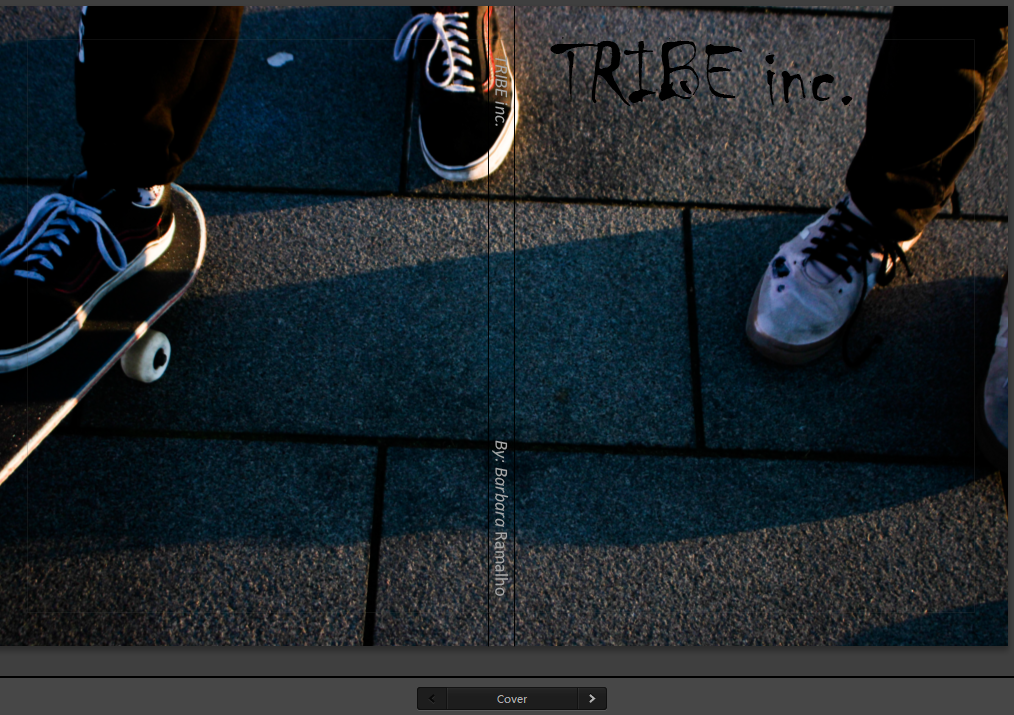
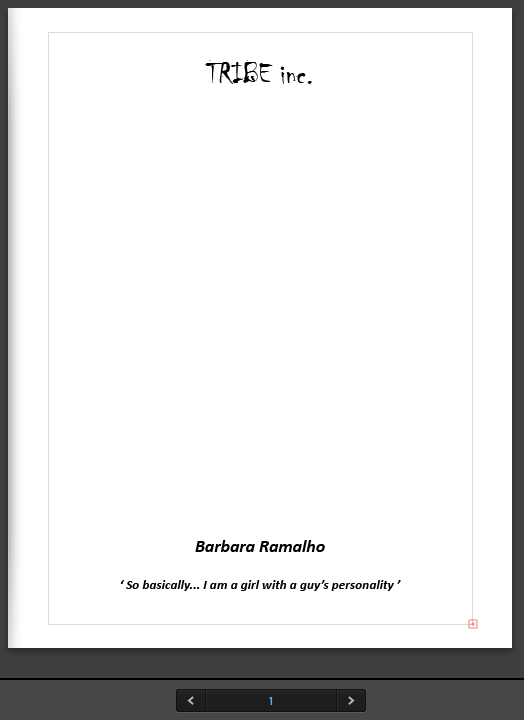

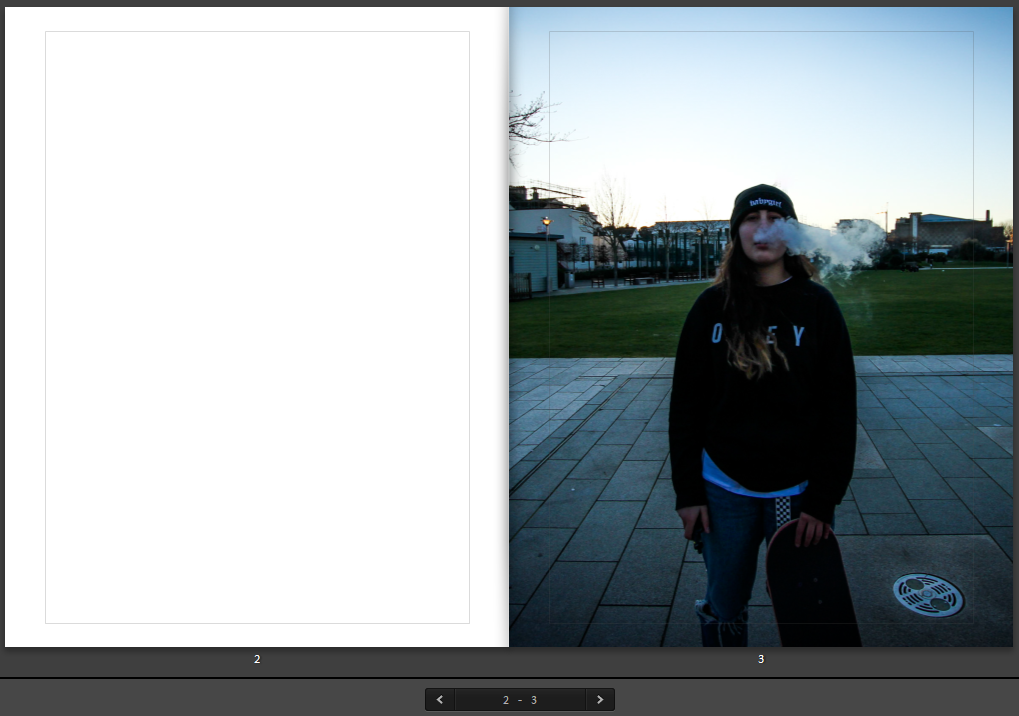

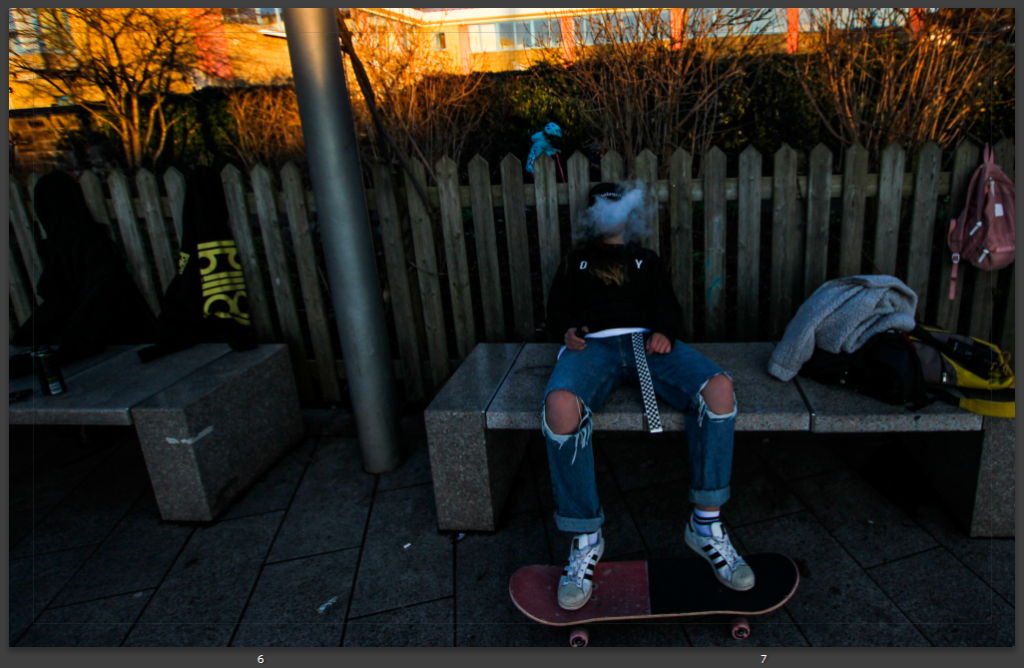
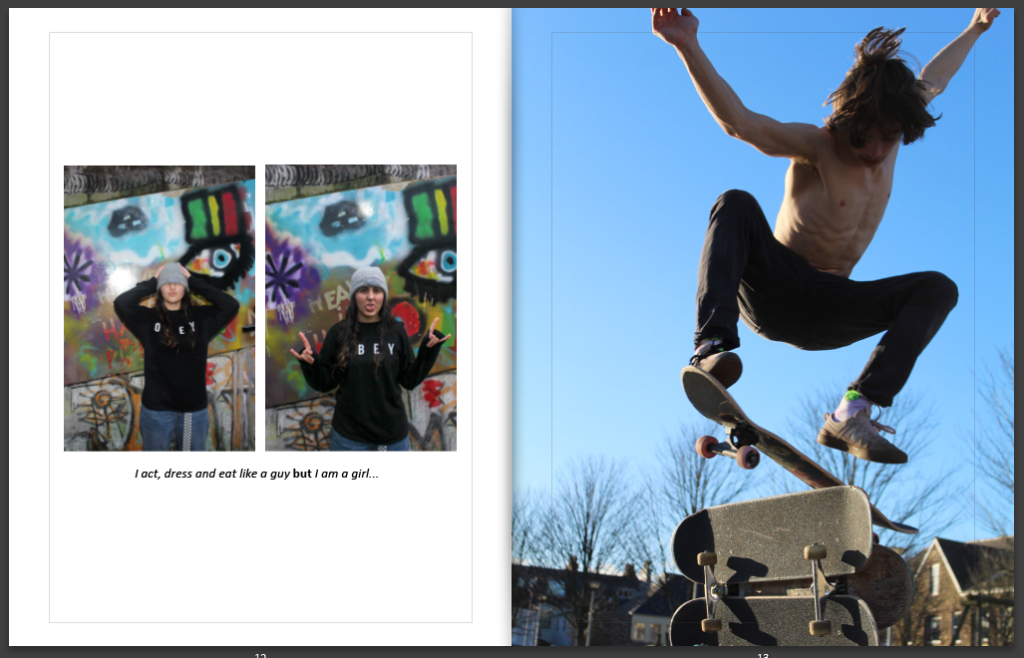
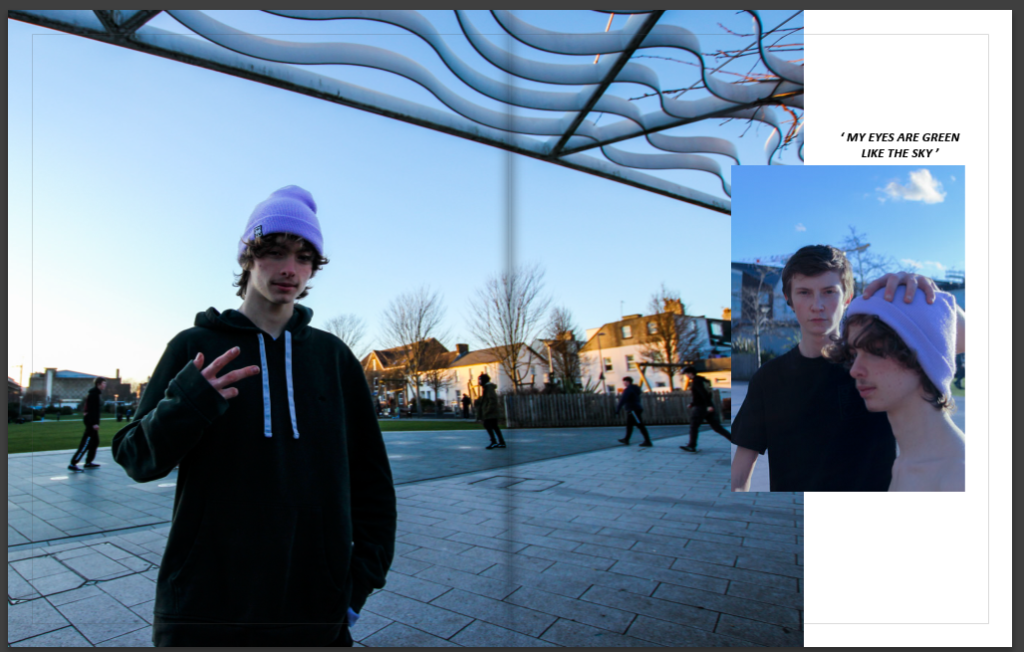

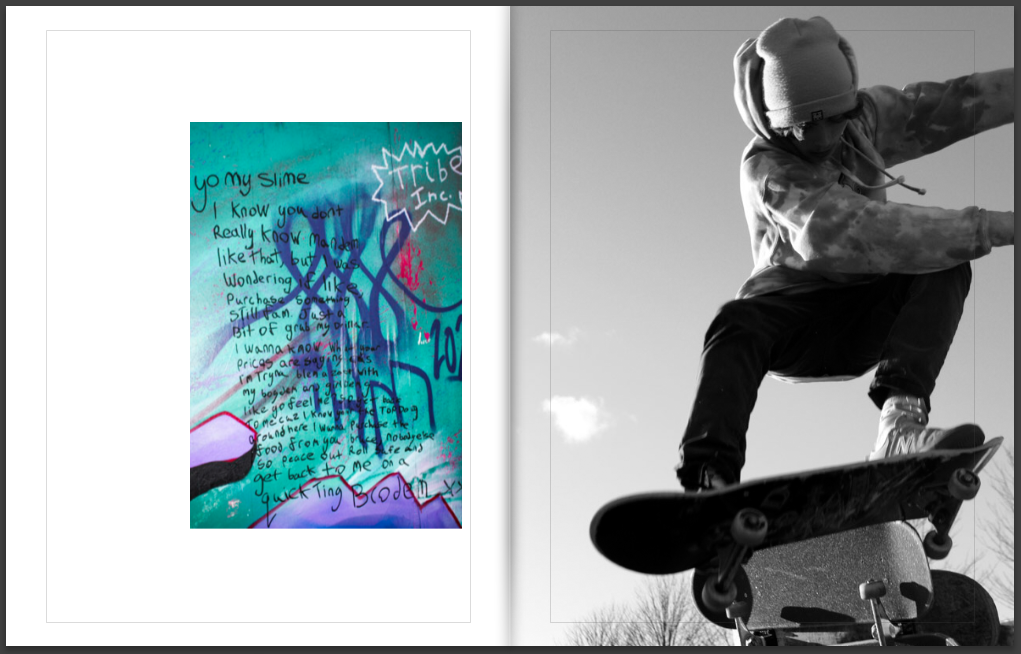
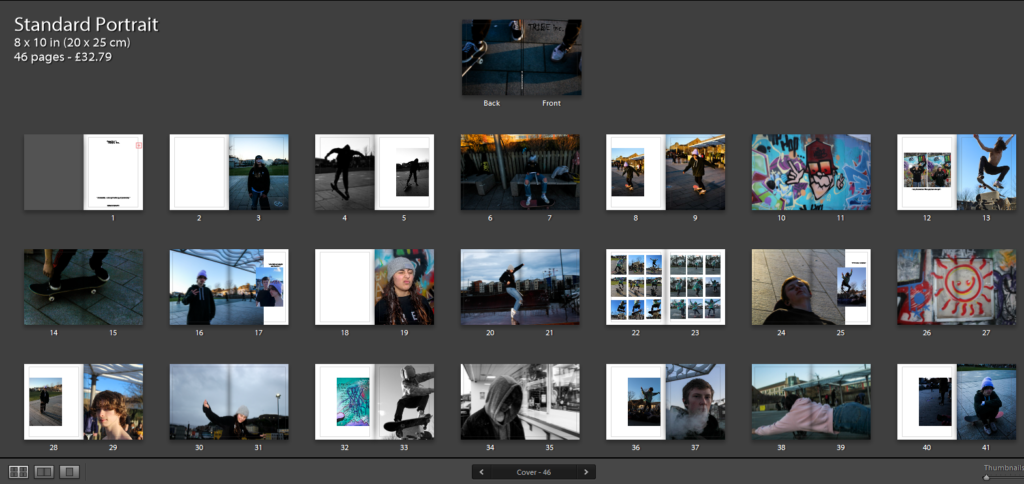

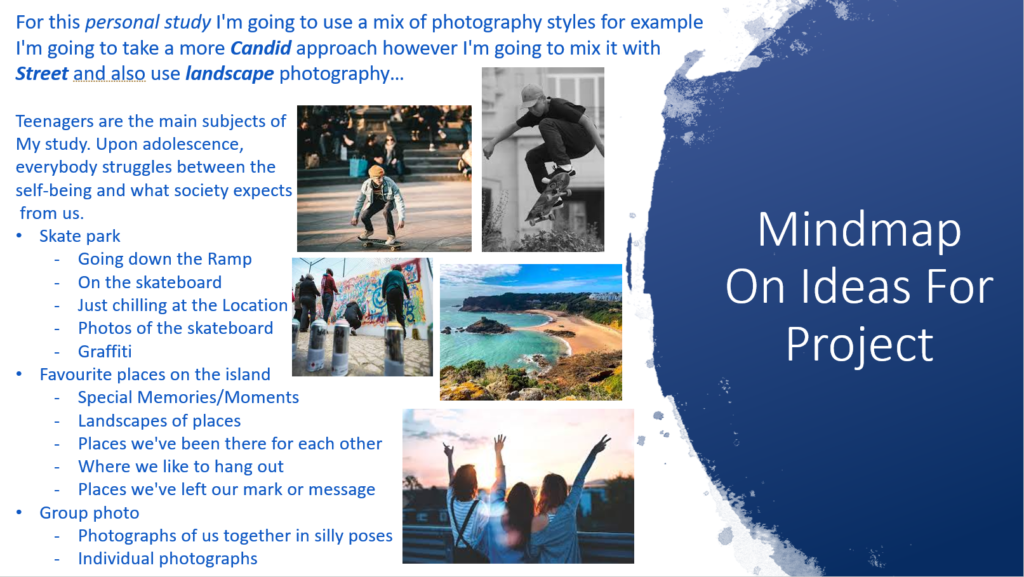

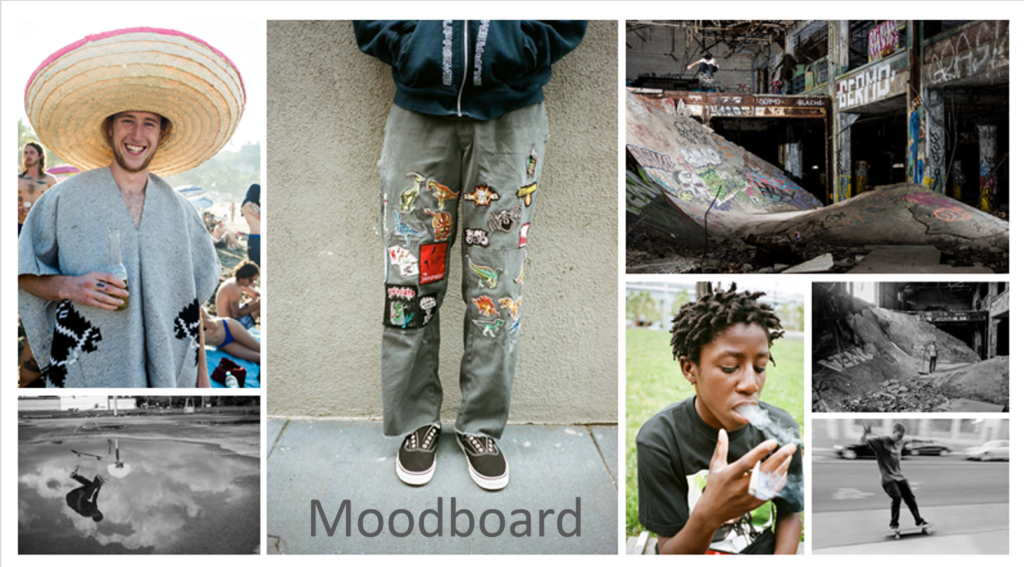

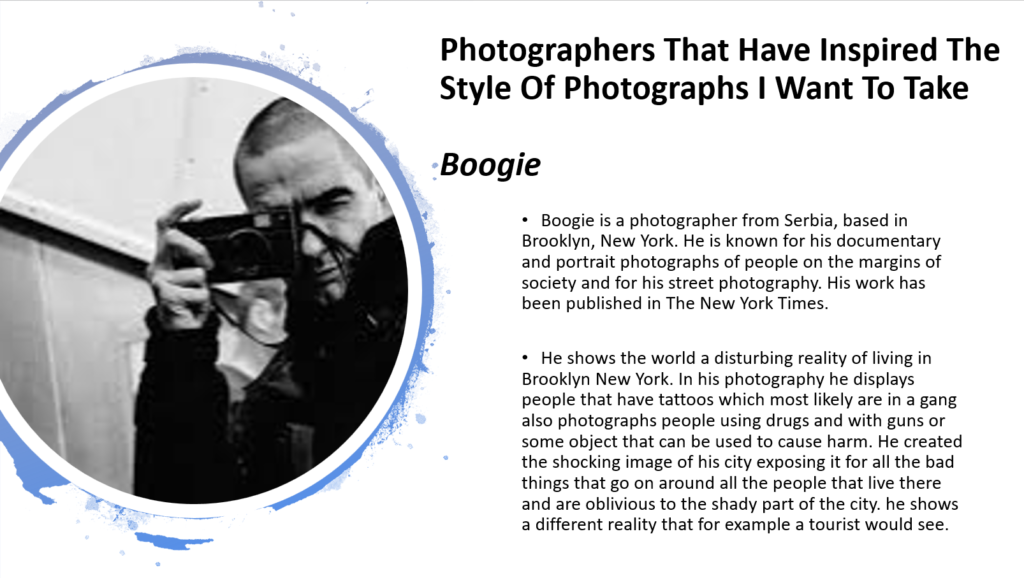




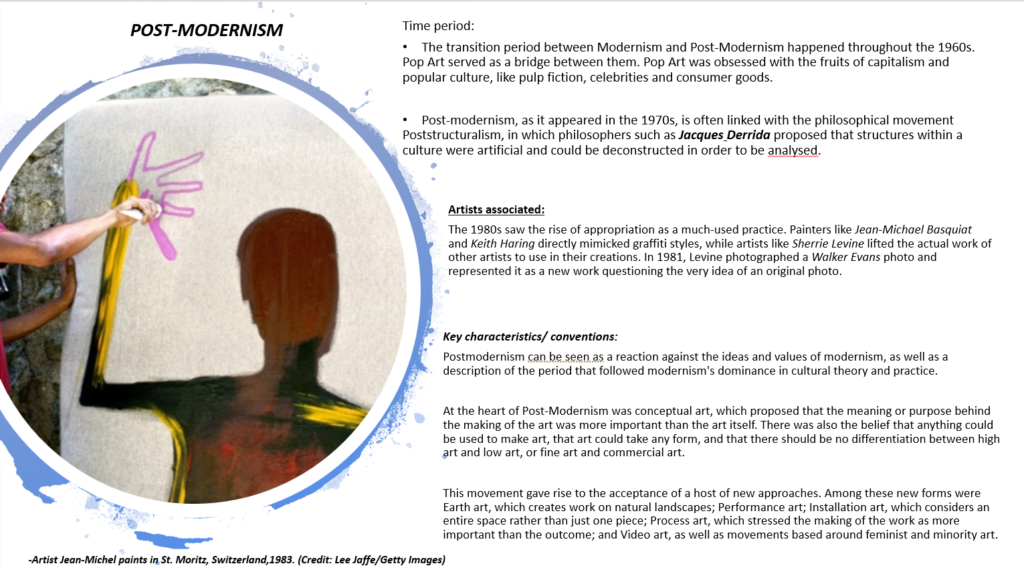
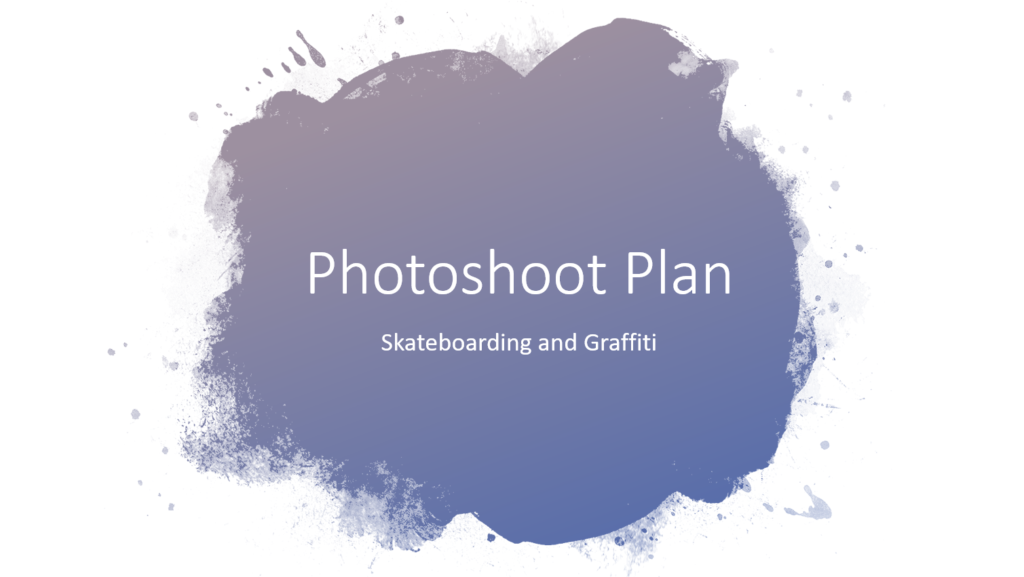


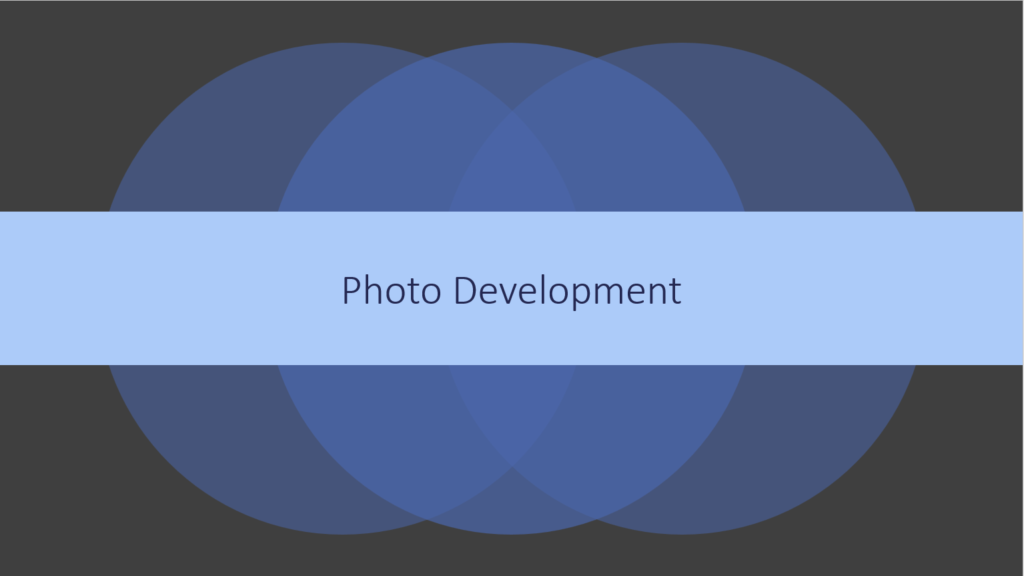

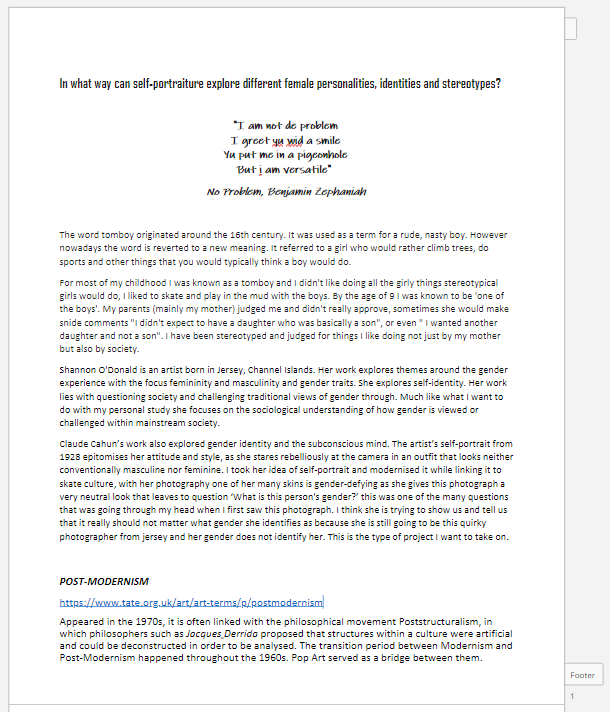
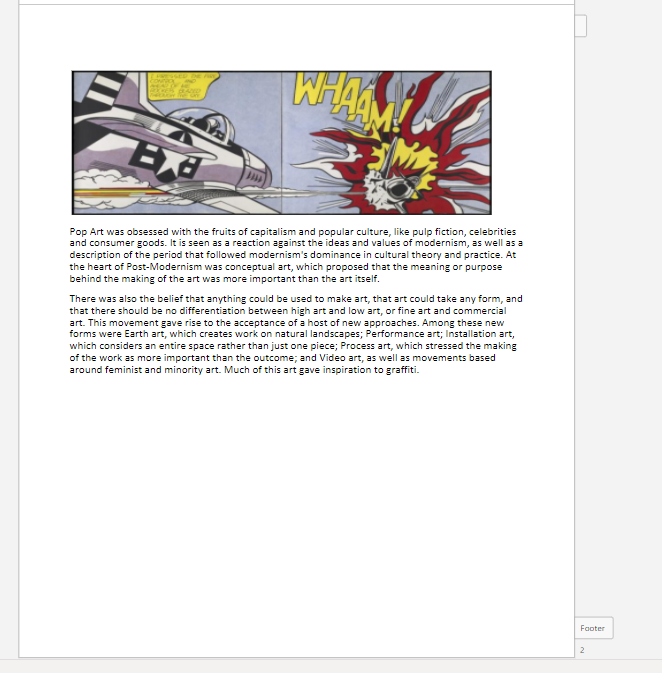
Essay question:
In what way can self-portraiture explore different female personalities, identities and stereotypes?
Opening quote:
“I am not de problem
I greet yu wid a smile
Yu put me in a pigeon hole
But i am versatile”
No Problem, Benjamin Zephaniah
Introduction (250-500 words):
My area of study
The word tomboy originated around the 16th century. It was used as a term for a rude, nasty boy. However nowadays the word is reverted to a new meaning. It referred to a girl who would rather climb trees, do sports and other things that you would typically think a boy would do.
For most of my childhood I was known as a tomboy and I didn’t like doing all the girly things stereotypical girls would do, I liked to skate and play in the mud with the boys. By the age of 9 I was known to be ‘one of the boys’. My parents (mainly my mother) judged me and didn’t really approve, sometimes she would make snide comments “I didn’t expect to have a daughter who was basically a son”, or even ” I wanted another daughter and not a son”. I have been stereotyped and judged for things I like doing not just by my mother but also by society.
“I am not de problem
I greet yu wid a smile
Yu put me in a pigeon hole
But i am versatile” By Benjamin Zephaniah
Artists I will be analysing
Shannon O’Donald is an artist born in Jersey, Channel Islands. Her work explores themes around the gender experience with the focus femininity and masculinity and gender traits. She explores self identity. Homework lies with questioning society and challenging traditional views of gender through her work she focuses on the sociological understanding of how gender is viewed or challenged within mainstream society.
Claude Cahun was a Surrealist photographer whose work explored gender identity and the subconscious mind. The artist’s self-portrait from 1928 epitomises her attitude and style, as she stares rebelliously at the camera in an outfit that looks neither conventionally masculine nor feminine. with her photography one of her many skins is gender-defying as she gives this photograph a very neutral look that leaves to question ‘What is this persons gender?’ this was one of the many question that was going through my head when I first saw this photograph. I think she is trying to show us and tell us that it really should not matter what gender she identifies as because she is still going to be this quirky photographer from jersey and her gender does not identify her.
Historical/ theoretical context within art
Modernism, the age of enlightenment. It was the shift in the late 1800s to modernism can be partly credited to new freedoms enjoyed by artists. It was a shift away from believing that god is going to save us from all evil and towards science or philosophers who might create something that would be our saving grace and actually help us. For example creating medicine like pain killers and vaccines that to this day are used to reduce the pain in cancer patients who are going through chemotherapy and the COVID-19 vaccine that trains the immune system to fight.
At the time, the growing field of psychology thanks to people like Sigmund Freud turned the analysis of human experiences inward and encouraged a more abstract kind of science and thinking. Essentially this inspired the visual arts to follow. With shifts in technology creating new materials and techniques in art-making, experimentation became more possible meaning it gave the art work a wider reach. Printing advances in the late 1800s meant posters of artwork widened the public’s awareness of art and design and conveyed experimental ideas into popular culture.
Modernism makes references to things inside the art itself. For example, from composition, material, skills, techniques, all the way to the process. Modernism in art holds a belief in the individual genius of the artist, a desire for originality, a thirst for the new, and reverence for the precious, unique art object. Modernism is concerned with ‘object rather than subject, creator rather than spectator.’
A key movement for this shift was The Dada movement took experimentation further by rejecting traditional skill and launching an all-out art rebellion that embraced nonsense and absurdity. Dadaist ideas first appeared in 1915, and the movement was made official in 1918 with its Berlin Manifesto. Traditionally, a painter was commissioned by a financier to create a specific work. The late 19th century witnessed many artists capable of seizing more time to pursue subjects in their personal interest.
Modernism reached its peak with Abstract Expressionism, which began in the late 1940s in the United States. Moving away from commonplace subjects and techniques, Abstract Expressionism was known for oversized canvases and paint splashes that could seem chaotic and arbitrary. Each Abstract Expressionist work functioned as both a document of the artist’s subconscious and a map of the physical movements required to create the art. Painter Jackson Pollock became famous for his method of dripping paint onto canvas from above.
